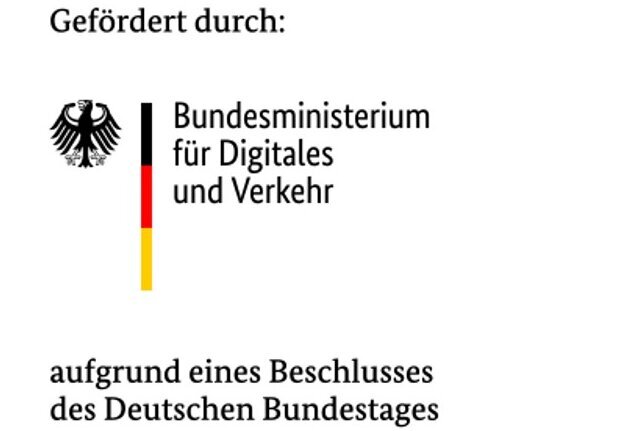
DataBikeSim
The importance of cycling simulations can be seen in various areas such as cycling infrastructure planning and infrastructure evaluation, accident research, traffic psychology and others. Cycling simulators can be used to evaluate cycling infrastructure according to criteria such as quality, safety and comfort perception of cyclists on existing or planned cycling paths. A safe and well-developed cycling infrastructure and an extensive cycling path network with cycling highways promote and facilitate the switch to bicycles and e-bikes. Cycling contributes to the reduction of CO2 emissions. But is the riding behavior of participants in cycling simulators really comparable to riding behavior on real roads? The project “Data-based models for realistic simulation studies in cycling research - DataBikeSim” addresses this question.
DataBikeSim is developing a study on differences in riding behavior between bicycle simulation and real traffic interaction.
The DataBikeSim project is being implemented by Karlsruhe University of Applied Sciences and Blickshift GmbH and is funded by the Federal Ministry of Digital and Transport (BMDV) as part of the mFUND innovation initiative. The aim of DataBikeSim is the analysis and comparative study of participant behavior in various test scenarios compared to interaction in bicycle simulators and to interaction in real traffic situations. The result will be a catalog of requirements for bicycle simulators in order to achieve comparable study results with reality.
The Institute of Transport and Infrastructure (IVI) and the Institute for Energy Efficient Mobility (IEEM) are particularly involved in this project at Karlsruhe University of Applied Sciences. IVI is responsible for coordinating the project, equipping sensors and carrying out data collection and studies. The IEEM is responsible for the technical implementation of the study and thus the development and construction of the bicycle simulation, the virtual reconstruction of real test routes to evaluate the bicycle simulation and the integration of VR visualization into the simulation. Blickshift GmbH contributes its expertise in extensive gaze behaviour data (Blickshift Analytics) to the project as well as experience in the field of data synchronization of data streams (Blickshift Recorder) in complex user experiments.

Research questions and approach
At the beginning of the project, the characteristics of interaction in traffic are determined from the perspective of a cyclist. This includes factors such as the direction of gaze (eye tracking), stress level (heart rate, skin conductance), speed, angle of inclination, braking, riding distances and others. Various sensors are integrated and synchronized to record this data in test scenarios. An identical set of sensors is used for the simulation and real driving, so that the sensor data is comparable for identical test routes in reality and simulation. In particular, DataBikeSim focuses on the approach of a bike simulation with virtual reality. The following key question is of central importance: How must VR simulations be set up so that virtual traffic behavior corresponds to real traffic behavior? The data is evaluated using statistical and visual analytics methods.
Possible areas of application and target groups
- Research institutions in the field of cycling research
- Traffic planning
- Accident research
- Traffic psychology
- Producers of simulators
- Public participation to evaluate current or new cycle routes or to evaluate the quality of the cycling path network
- Technical testing organizations
- …


Eckdaten
Karlsruhe
Institute of Energy Efficient Mobility (IEEM)
Moltkestr. 30
76133 Karlsruhe
Post >
Institute of Energy Efficient Mobility (IEEM)
Postfach 2440
76012 Karlsruhe